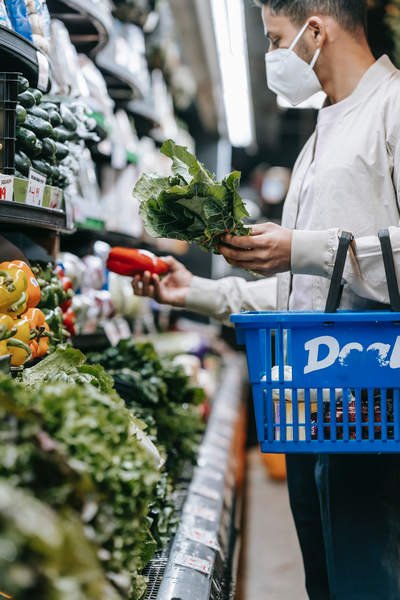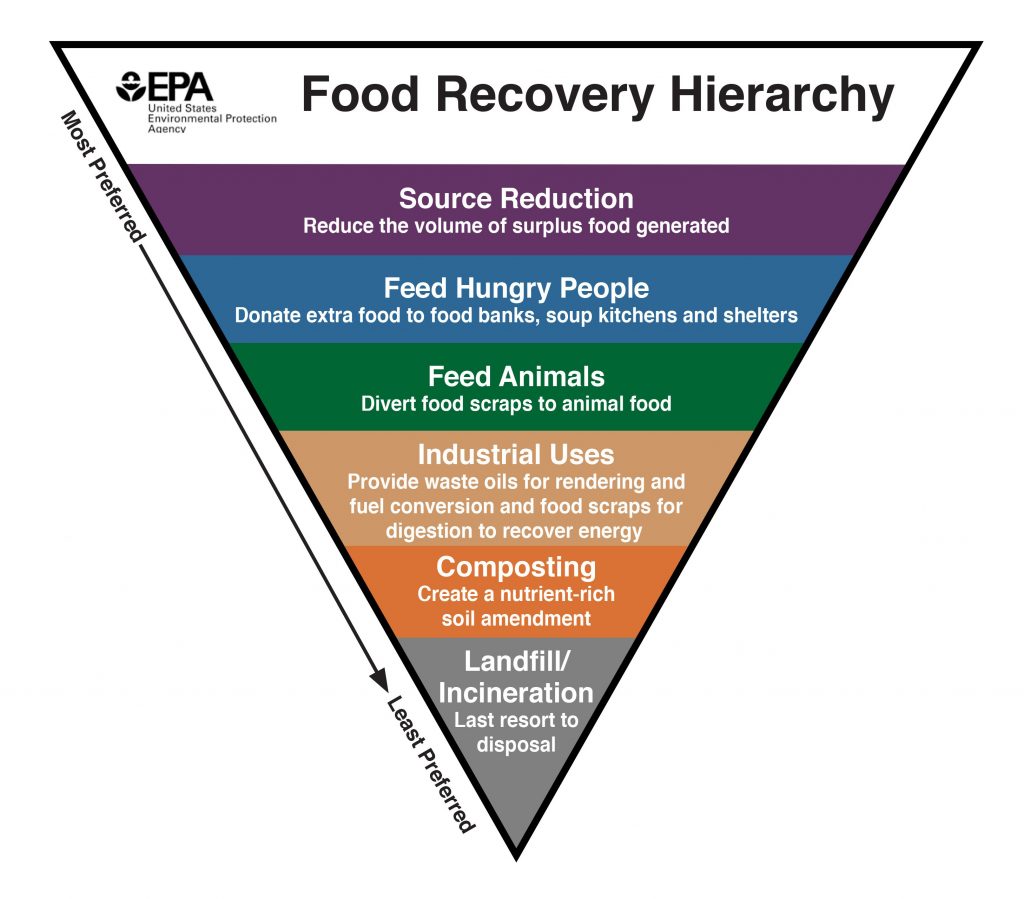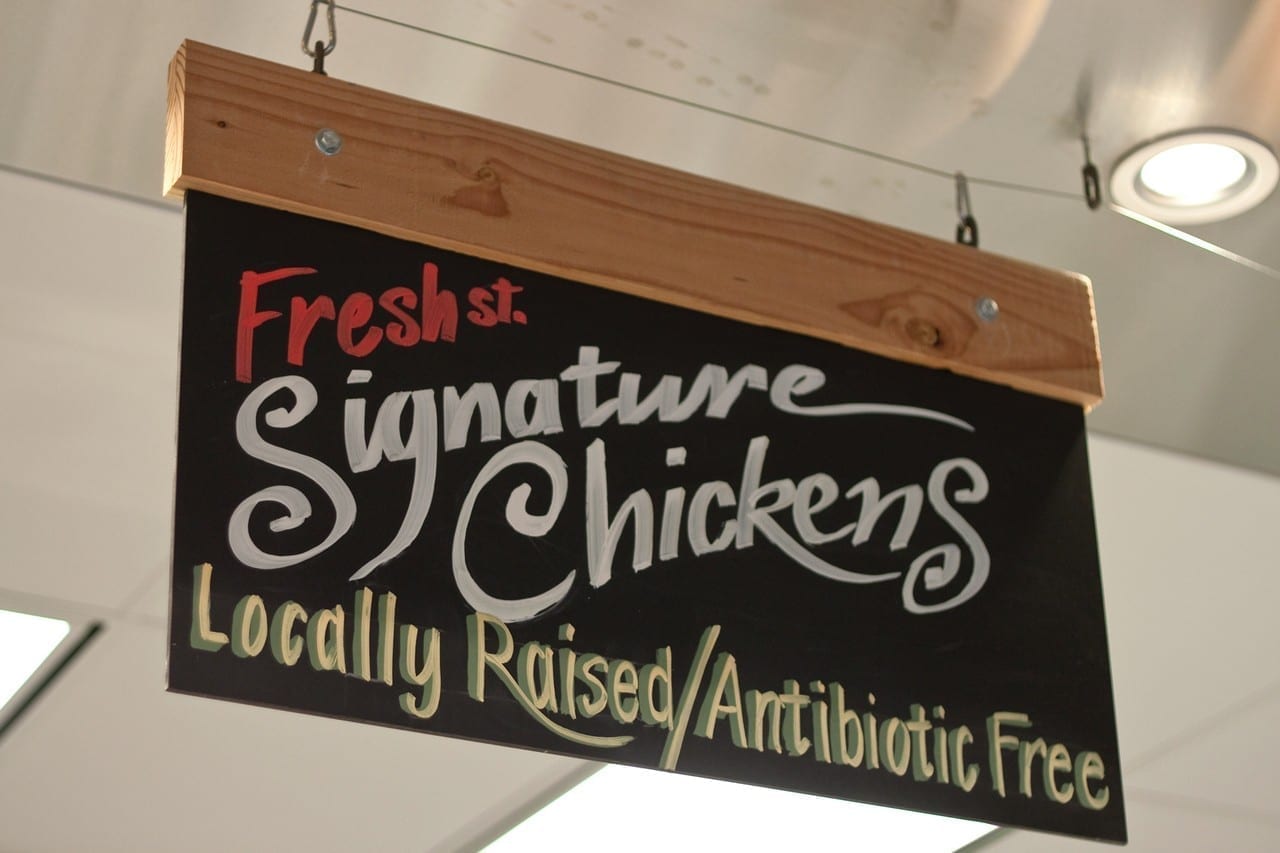
How can supermarkets be more environmentally friendly?
There are few places where a consumer’s environmental footprint is more apparent than at the grocery store. Consumers shop for groceries twice a week on average, and close to 80% of those consumers are now interested in the environmental impact of their choices, creating new opportunities for sustainable grocery stores.
Today’s shopper wants to patronize stores that make it easier for them to practice a sustainable lifestyle. The grocery industry has been slow to respond to this need, perhaps because of the misapprehension that sustainability is expensive. In fact, sustainable store strategies can add significantly to the bottom line, while increasing customer loyalty and competitive advantage.
Sustainable operations drive grocery store design decisions
When considering the environmental impact of your store, it helps to think about these key sustainable operations objectives:
- Increase energy efficiency
- Switch to renewable energy sources
- Reduce emissions of super-pollutant hydrofluorocarbons (HFCs) from refrigeration systems
- Reduce packaging
- Encourage recycling and reuse
- Reduce food waste
- Source products locally
- Emphasize plant-based foods
Consider the activities and workflow needed to achieve these goals and how a grocery store design or remodel could support that effort. For example, if recycling and composting will be a more important part of your operations, think about how your physical plant could better enable easy transport, handling, storage, and removal of those materials.
Setting these 7 strategic priorities will make your grocery store more sustainable.
Priority 1: Choose sustainable refrigeration systems
Some of the most environmentally destructive technologies at use today are refrigeration systems that use Hydrofluorocarbons (HFCs). HFCs are greenhouse gases with global warming potentials (GWP) vastly greater than carbon dioxide. They’re the fastest-growing greenhouse gas emissions on the planet. Per the EPA, a typical food retail store’s refrigeration system leaks about one-quarter of its refrigerant charge each year, which is not just environmentally destructive but expensive.
According to ClimateFriendlySupermarkets.org, the average grocery store emits 875 pounds of HFCs per year–the equivalent of 336 cars. With 38,000 supermarkets all pumping HFCs into the environment, it’s the equivalent of burning 49 billion pounds of coal a year.
Alternative refrigerants include carbon dioxide, propane, isobutene and ammonia, all of which have Global Warming Potential ratings lower than 10 (Less than 150 GWP is considered best in class.) Aldi and new Whole Foods stores are utilizing the alternative refrigerant Transcritical C02.
The EPA has created a Green Chill Certification program to recognize stores that have adopted sustainable refrigeration systems. The program is open to any food retail store in the US, and there is no fee to apply for certification.
Installing refrigeration systems and air conditioners that utilize non-HFC refrigerants will produce some of the greatest environmental benefits of any grocery store design decision you make.
Priority 2: Think sustainable from the outside In
The lowest-impact “new” store is a remodel. But if the goal is to build a new, eco-friendly grocery store, sustainability begins with site selection. Building on previously undeveloped land creates a greater environmental impact and can reduce the likelihood of access to public transportation.
When selecting builders, look for a company that has a track record of mitigating construction site pollution. When remodeling, have your architect and builder assess the existing building with an eye toward recycling and/or salvaging building materials.
Other sustainable design strategies for the exterior of your grocery store:
- Design your site to capture and even store stormwater runoff, which can be substantial from large store grocery roofs. Utilize pervious pavements (which permit water to re-enter the soil beneath)
- Emphasize native and drought-tolerant plants, while providing ample shade to counteract the “heat island” effects of parking lots.
- Heat absorption can be reduced by utilizing reflective roofing and paving materials.
- Manage light pollution through mindful interior and exterior lighting design choices.
- Provide EV charging stations and preferred parking areas for hybrid and EV vehicles to support shoppers’ own sustainability choices. Amenities like bicycle storage and showers in restrooms encourage employees to adopt sustainable commute practices.
Priority 3: Increase energy efficiency
Grocery stores use more energy per square foot than any other business. With razor-thin profit margins, grocery stores that increase their energy efficiency can see a significant impact on their bottom line.
Solar Energy
Thanks to grocery stores’ large rooftops, solar power is an ideal alternative energy source. Parking lot shade canopies offer another excellent opportunity for installing solar panels. As battery storage systems become more efficient, solar power may ultimately enable stores to become virtually energy-independent and more resilient.
Natural light
When designing and remodeling grocery stores, utilize natural light in your design from windows and skylights. Clerestory windows can be placed well above store fixtures to provide more natural light.
Not only will it reduce energy costs, but natural light improves mood and enhances productivity.
One study of the effect of natural light on consumer behavior discovered that checkout stands located under skylights recorded sales that were 40% higher than those lit with artificial light. The Swiss Federal Institute of Technology conducted a study that showed employees who worked in natural light reported higher energy levels.
Make sure refrigerated produce displays are functioning
Spending a few minutes a day moving produce off the air curtain can result in tens of thousands of dollars of savings in energy per year in a large supermarket. (It also makes the produce section more comfortable for customers, rather than spewing cold air onto them.)
Switch ice-bed seafood displays to refrigerated cases

Opting for refrigerated cases instead of ice displays will have a significant impact on energy use in a grocery store. Producing ice with electricity is extremely expensive. A refrigerated seafood display uses $5,000 less energy per year than an iced seafood display and saves 100,000 gallons of water annually.
Switch to LED lighting
LED lights reduce energy costs dramatically over conventional fluorescents. Even though they are initially more expensive, thanks to their long lifespan, LEDs reduce maintenance costs and disruption to store operations for change-outs. In parking lots, they provide brighter, more even, and safer lighting at a lower cost.
Realistic lighting from LEDs reproduces the wavelength of natural light customers experience outside. In produce sections, realistic lighting has been proven to increase sales. The specific wavelength of agricultural lighting stimulates plant growth and slows deterioration, which keeps produce looking fresh longer. It’s estimated that prolonging shelf life of fresh produce by just one day could reduce the cost of waste by almost one-third.
Renewables and Carbon offsets
Stores committed to carbon-neutral operations can purchase energy from renewable sources, including wind, solar, and geothermal. Maryland’s Mom’s Organic Market supplies 25% of its stores’ power with solar energy generated by a Maryland solar farm. In addition, the company offsets its energy consumption through wind power energy credits. Festival Foods in Wisconsin recycles heat from refrigeration units to warm its stores during winter months.
Along with reducing your emissions, Carbon offsets are another way to reduce a store’s environmental footprint. When you purchase offsets, the funds are used for projects that sequester carbon or restore carbon-absorbing habitat like forests, wetlands and marine ecosystems.
Uncover inefficiencies—and profit
To implement a serious energy efficiency program across multiple store locations, Taper, a B-Corp subsidiary of Ecology Action, specializes in scalable building efficiency. The company operates as a consulting partner and general contractor to help businesses achieve massive greenhouse gas reductions and operational savings–quickly.
Priority 4: Pare down packaging
Favoring products with minimal and no packaging has a tremendous impact on the amount of waste that ends up in landfills. Zero waste has become a goal for many grocery store brands. Food Lion has set a goal of cutting food waste in half by 2030. By 2025, 100% of the company’s plastic packaging will be reused, recycled or composted. Aldi has committed to make all of their packaging “reusable, recyclable, or compostable” by 2025, as well.
Make recycling easier
Recycling is confusing to many consumers. How2Recycle is a standardized labeling system that clearly explains how an item should be recycled. Companies adopting these labels include Kraft/Heinz, Amy’s, General Mills, and Nestle. How2Recycle has also partnered with Walmart, Aldi and Target to ensure that their private brand products will include the labels. Stores can take this a step further by educating consumers about how to properly recycle different materials.
A sustainable grocery store should make recycling and reuse simple, convenient and even fun. Stores can employ engaging, interactive designs that even “gamify” recycling and re-use for shoppers and their kids.
Reduce plastic waste
Today’s shoppers are familiar with the gruesome statistics about plastic. Microplastics have entered our food chain through seafood. Ocean debris kills over 1 million seabirds and 100,000 sea mammals annually. According to EcoWatch, in the Los Angeles area alone, 10 metric tons of plastic fragments—like grocery bags, straws and soda bottles—are carried into the Pacific Ocean every day. Recent revelations about how little plastic sent for recycling actually gets recycled has made reducing the use of plastic an even more urgent priority. Yet the convenience of plastic makes it hard to avoid.
Perhaps the biggest no-brainer of sustainability is eliminating single-use plastic bags, which spend an average of 12 minutes in use and up to 1,000 years in the environment. In August, 2021, CVS Health, Target, and Walmart began testing alternatives to the single-use plastic shopping bag as part of the 3-year-long “Beyond the Bag Initiative”, a challenge created by the Consortium to Reinvent the Retail Bag.
In the produce department, compostable produce bags have become more common; Trader Joes began offering them in 2018. Stores still need to help consumers understand what to do with those bags to ensure they end up in the correct waste stream. Paper bags have made a comeback at some grocers. Reusable mesh bags are the most sustainable approach and can be merchandised in the produce department.

Stores can also teach shoppers they have the option of not putting most produce into bags at all, since they’ll wash it before eating. Eco-friendly grocer Elroy’s Market in Monterey, California provides small produce baskets to assist shoppers in gathering items in their produce department, further reducing the need for bags. Once home, produce can be stored in reusable containers. Offering these new ways of shopping to customers takes effort and education in the form of signage.
Many grocers have also reduced or eliminated the use of plastic clamshells for certain produce food items, switching to cardboard-and-cellophane boxes.
When choosing products to carry, consider recyclability or re-use programs that will help make your store’s offerings more sustainable. Some stores have stopped carrying beverages packaged in single-serving, virgin plastic containers.
Encourage Bulk Food Sales
“Bring your own container” discounts for bulk food purchases can encourage consumers to buy more food that is package-free. Upgrading the design of bulk food bins and bulk food sections can help customers who’ve rarely used this option to explore the possibilities. Merchandising your own branded, refillable bulk containers and jars in the bulk food section can streamline the weighing process without the use of bags.
House brands can reduce waste
The Aldi grocery store chain predominantly sells its own house brands, giving it maximum control of the packaging used. This strategy has helped win it recognition as one of the most eco-friendly grocery store chains. Target promises that, by 2040, “we plan for 100% of our owned brand products to be designed for a circular future. We will continue designing to eliminate waste, using materials that are regenerative, recycled or sourced sustainably, to create products that are more durable, easily repaired or recyclable.”
Priority 5: Reduce food waste
The United States Department of Agriculture estimates that 31 percent of the food supply purchased by stores and restaurants ends up in the landfill. Grocery stores may be responsible for 10% of all the waste in landfills. Food waste also contributes to greenhouse gases; if the U.S. can reduce its food waste by 50% it will eliminate 75 million metric tons of greenhouse gases, too.

Food waste has become an important issue for consumers and the subject of new government regulation. The EPA Food Recovery Hierarchy provides retailers with a road map for the prevention of waste and the management of inedible food waste.
The hierarchy ranks food waste management activities, from best to worst:
- Source Reduction: reduce the amount of surplus food generated
- Feed Hungry People: donate to food banks, shelters, soup kitchens
- Feed animals: divert scraps to animal food
- Industrial uses: extract oil for fuel, generate energy from waste
- Composting
- Landfill/Incineration
Food waste reduction also pays off on the bottom line. A 2017 report from the World Resources Institute debunked the notion that food waste is an inevitable cost of doing business. Food retailers in one study earned an 8:1 ROI (for every dollar invested in waste reduction, eight dollars were earned.) But another experiment in Great Britain found that the ultimate payoff, when private and public costs were fully considered, was 94:1.
Some grocery stores now assemble boxes of imperfect produce to sell at a discount, as the UK’s Lidl does in its “Too Good to Waste” box.
Understanding these priorities can inform the design and remodeling of stores, as well as operations, to support waste-reduction functions. Most grocery stores send food waste to outside composters, and some even sell the compost that’s created. Sustainable store design should take into consideration how best to collect, store, and move food waste.
Priority 6: Emphasize plant-based foods and humanely-produced animal products
Meat production has a negative impact on climate, as does deforestation for agriculture. A UN-backed research report concluded that the global food system is responsible for 30% of greenhouse gas emissions, and of that, animals produce more than half. It notes that our current system of food production depends on “inputs such as fertilizer, pesticides, energy, land, and water, and on unsustainable practices such as mono-cropping and heavy tilling.” Such practices have “reduced the variety of landscapes and habitats” which have led to the extinction of native plants and animals.
Moving toward sustainably farmed, plant-based diets dramatically reduces the amount of land required to produce food and the environmentally harmful inputs. Even when plant-based proteins are substituted for animal proteins, the impact is dramatic, because so much land is required to grow animal feedstock.
Stores committed to sustainability can reduce the amount of animal products sold and ensure that their eggs, dairy, and meats are from sources that produce humanely. Most savvy consumers insist on sustainable seafood and want to understand its source. Use displays and signage to make sure you tell the sustainability story for these products.
Education and awareness are key
Sustainable grocery stores can use in-store signage, discounts, and sampling to highlight and increase awareness of the most sustainable choices. By thinking in terms of “proteins” versus “meats” a sustainable store can help shoppers understand how to incorporate grains, seeds, and nuts into their diet.
Plant-based diets rely less on processed foods, and for time-pressed consumers, this loss of convenience can be off-putting. However, it’s an excellent opportunity for the sustainable store to teach shoppers how to use whole, organic foods free of chemicals and pesticides—not just highly processed meat substitutes. Classes and vendor events at in-store teaching kitchens can help shoppers learn to create easy, appealing, healthy meals and to prepare less-familiar foods.
Priority 7: Favor local food

A centerpiece of sustainable grocery stores is local produce. In some regions, local offerings go beyond fresh fruits and vegetables to include locally grown grains and flours, eggs, and meats.
By reducing the amount of transportation (and refrigeration) required to get their produce to the store, the carbon footprint of food can be lowered dramatically. Most sustainable grocery stores prioritize offerings from local farmers. The definition of “local” varies widely. The 2008 Farm Bill considers a “locally or regionally produced agricultural food product” to be one transported up to 400 miles from its origin. However, a 2010 study by the USDA found no consistently accepted definition.
Some sustainable grocers share the names and locations of their producers to enable shoppers to make their own, informed choices. Others provide a “local” section, or even a store-within-a-store.
Not every market area has traditionally had access to local produce, especially cities. Canadian retailer Sobeys recently partnered with Infarm, a Berlin-based ag tech company that produces food indoors, in “vertical farms”, for urban markets. The vertical farming units can grow the same amount of produce as 100,000 square feet of land.
“Smart” greenhouses and farms housed in shipping containers are another highly efficient way to intensively grow fresh produce in areas where traditional agriculture isn’t possible, or where land is too costly. One Canadian grocery store, IGA in Montreal, grows vegetables on its 25,000 square foot green roof. Green roofs can manage rainwater runoff and are increasingly being used for hydroponic farming in urban settings.
Local food production also contributes to economic sustainability and public health, according to a 2017 study by the Federal Reserve Bank of St. Louis. The study, Harvesting The Power of Regional Food System: Investments Opportunity to Transform Communities, found “the development of regional food systems not only contribute(s) direct economic benefits to the community, but can also open the door for improved access to healthy food and other positive outcomes that could result in improved community health and a more productive workforce.”
Take action
It’s essential that stores communicate their sustainability efforts, while partnering with consumers on theirs. Telling your story authentically, effectively, and consistently is key. Passive communication, through displays and signage, is one important method. Is it easy for consumers to locate organic, local, humanely raised, green certified, and fair trade products in your store?
It’s equally important to make sure your employees understand your sustainability efforts and and can communicate them with confidence and ease to customers.
For companies trying to build or remodel a sustainable grocery store, or planning to make existing stores more environmentally friendly, the Grocery Stewardship Certification program can help bring that vision to reality. It was developed to provide food retailers with a comprehensive sustainability program that also reduces costs and increases revenue.
It turns out, sustainable grocery stores can be good for the planet and profit.
